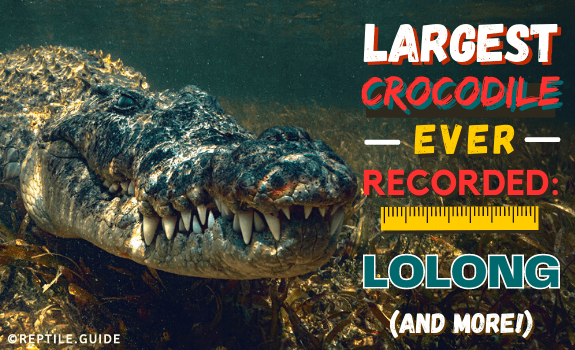Crocodilians are the most enormous reptiles on the planet.
Though crocodiles and alligators can reach epic proportions, the largest crocodile species can reach over 20 ft in length and weigh more than a ton!
They’re also highly elusive creatures, living tucked away in some of the world’s most difficult-to-access habitats.
What’s more, they’re able to disappear at a second’s notice – leaving nothing but a ripple!
These stealthy and secretive habits make it difficult to measure crocodiles – or even to estimate their size from afar.
As a result, most tales of “monster crocs” are quickly dismissed due to a lack of evidence.
Many of these claims do seem outlandishly exaggerated. Still, we know that crocodiles certainly can reach legendary proportions.
Overall, scientists believe that “giant” crocodiles are becoming rarer.
This change could be a result of selective hunting pressure – as trophy hunters and fearful villagers target the largest crocodiles, the genes associated with “gigantism” become lost to the ages.
Even so, some giants do remain and come into contact with humans every once in a while.
In this article, you’ll learn about the largest crocodiles ever recorded.
You’ll also earn which species grow the largest and where YOU can go to see the biggest crocs alive today.
We’ll also discuss their prehistoric ancestors, some of which make modern crocs look like house pets in comparison!
In This Article
Measuring Giant Crocodiles
Measuring a large crocodile is no easy task.
First, you have to find one. Remember that these animals inhabit some of the most challenging and treacherous terrains on planet earth.
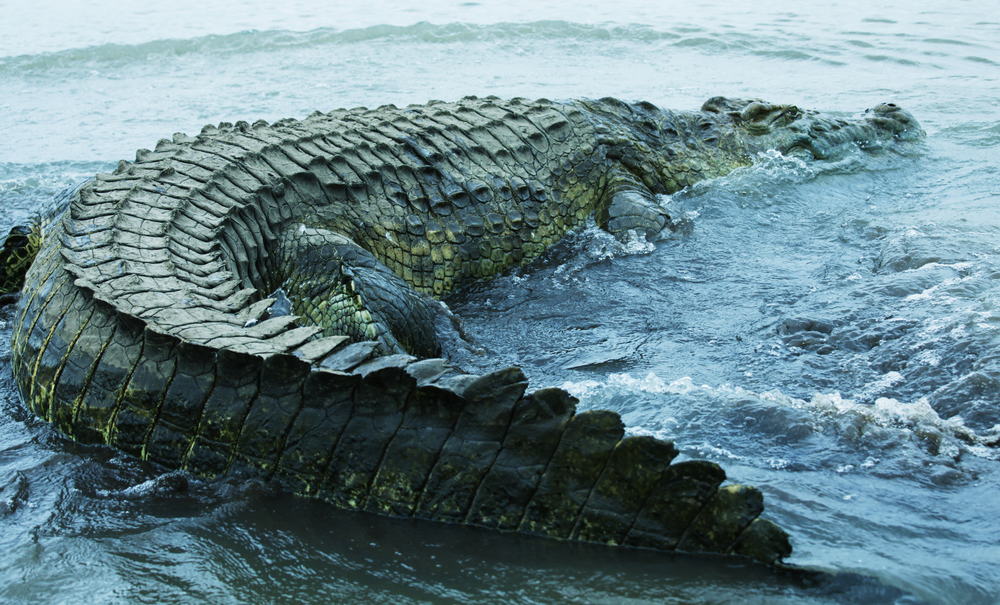
Humans are also the biggest threat to adult crocodiles.
People kill large crocs for their meat, to reduce competition for fish and game, and also out of fear.
This practice means that the world’s largest crocodiles only survive in the most remote areas.
Even once you’ve found a monster croc, you still have to actually catch it to measure accurately.
A good-sized boat for inshore fishing measures around 20 ft and weighs around 1,200 lbs.
A good-sized crocodile can surpass this by a few inches snout to tail and almost double the weight!
Ask anyone who claims to have seen a giant in the wild; it was probably bigger than the boat!
Rather than bring them aboard, most (sane) surveyors of wild crocodilians estimate size from a distance based on the size of an animal’s head.
This method is safer for researchers and crocs alike.
The so-called “7:1 method” provides a rough approximation – as most crocs’ total length is around seven times that of their skull.
This trick holds up well – for the most part – and allows us to estimate the length of long-deceased crocs using skulls housed in museums located around the world.
Still, it can be inaccurate by as much as several feet. It also gives no real indication of weight.
As a result, most record-holding crocs are animals that lived in captivity, where it’s much easier to obtain proper measurements.
Without a doubt, this means that record-breaking crocs are still out there.
Largest Crocodile Species
Crocodiles are challenging to measure, vary significantly in size, and may even be shrinking over time.
As a result, many of our records are based only on the size of incomplete museum specimens.
Scientists can account for the “shrinkage” of preserved hides over time or extrapolate skulls to provide a total length (using the “7:1 rule”).
Still, neither method is foolproof, and both carry some degree of error.
These factors mean that the “top three” largest crocodile species are still a topic of much debate.
In this section, we’ll list the top three largest croc species and the specimens that earned each its place in the record books.
#1 Saltwater Crocodile
The Australian saltwater crocodile (Crocodylus porosus) is the largest of ALL living reptiles.
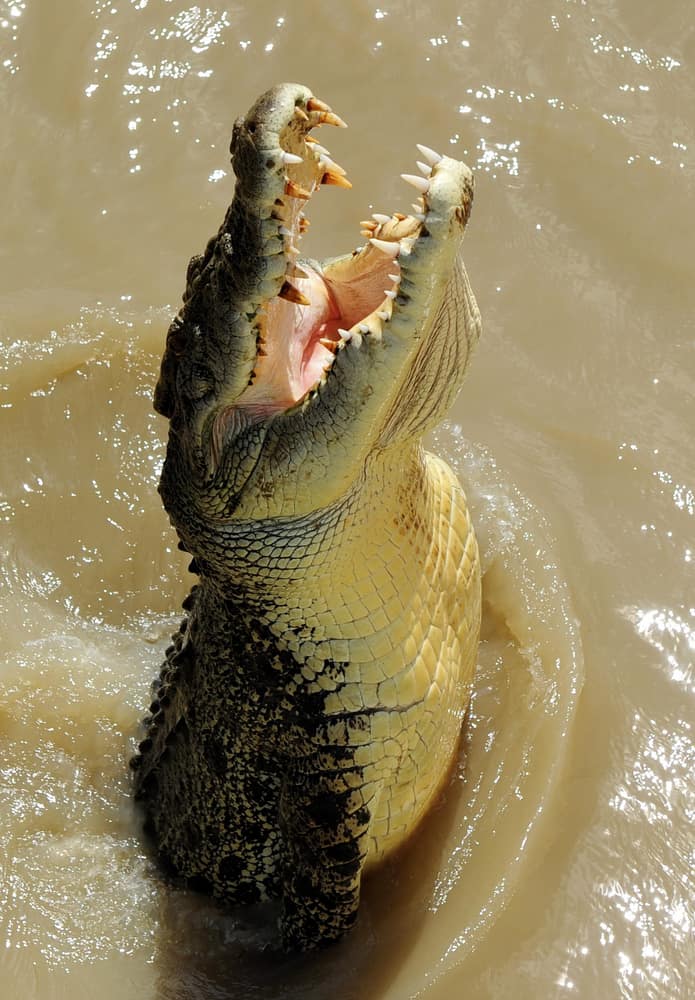
This giant croc species – also known as the estuarine crocodile or “saltie” – inhabits the coastal wetlands of Southeast Asia and Australia.
Their common names allude to their ability to survive for days – even weeks – at sea.
In a study by researchers at the University of Queensland, Australia, one croc was tracked on an ocean voyage of over 350 miles!
What’s more, the saltie reached its destination in as little as 25 days.
Males are the larger sex, growing up to an average of 14-16 ft and weighing around 1000 lbs.
Momma salties are still formidable – reaching an average of 8-10 ft and around 200 lbs!
#2 Nile Crocodile (Crocodylus niloticus)
The Nile crocodile (Crocodylus niloticus) is the second-largest croc species in the world.
It lives throughout Central, Southern, and Eastern Africa. There, it inhabits freshwater lakes, rivers, and wetlands – sometimes in large numbers.
On average, males reach lengths of around 11 to 16 ft. Females are a little smaller, reaching between 8 and 10 ft.
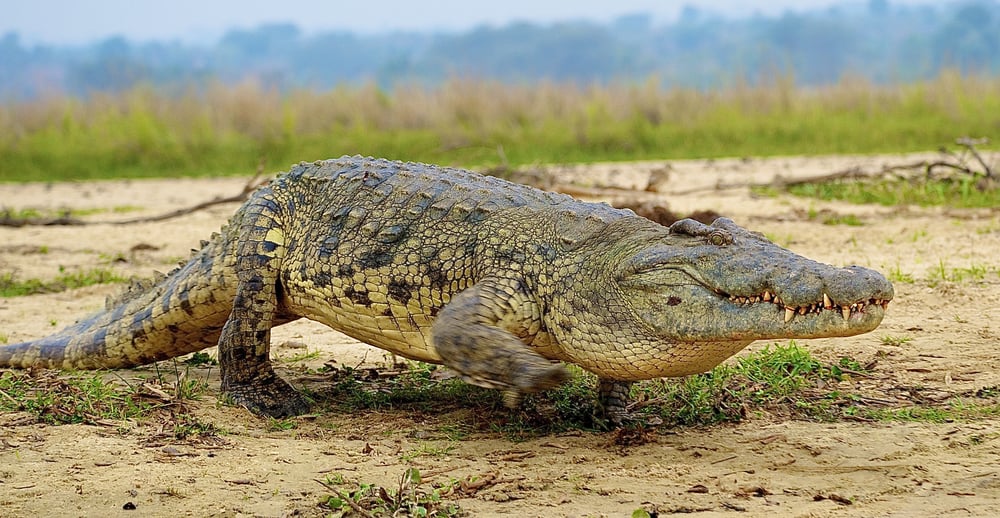
The largest Nile crocodiles attain lengths upwards of 18 ft.
Records of specimens above 20 ft do exist, but none in recent years.
Arguably the largest – and most famous – of all modern Nile crocs, Gustave, is a giant found in Burundi, near the shores of Lake Tanganyika.
Gustave has never been successfully measured. Scientists estimate that he may be longer than 18 ft long, weighing over 2000 lbs.
Gustave has a fierce reputation for killing. He’s rumored to have taken the lives of over 300 people in the area.
Despite several attempts, Gustave has never been captured. Rumor has it that he may have even been killed at some point over the last few years.
#3 Orinoco Crocodile (Crocodylus intermedius)
The Orinoco crocodile (Crocodylus intermedius) is a critically endangered croc native to South America.
These days, only a tiny population remains – in the Orinoco River Basin of Venezuela and Colombia.
The largest of these crocs may be around 17 feet in length.
Before these crocs were hunted to near-extinction, scientists believe that they may have reached much larger sizes.
In particular, one specimen – measured in the 1800’s – was reported to have exceeded 22 ft in length!
An assistant of the legendary scientist, Alexander von Humboldt, measured this giant.
If true, this would make it one of the largest crocs ever measured.
Unfortunately, von Humboldt’s record croc can never be independently verified, as no hard evidence (skull or skin) from this specimen has ever been uncovered.
Only between 250 and 1500 Orinoco crocs remain in the wild.
You can learn about efforts to conserve crocs at the IUCN Crocodile Specialist Group webpage.
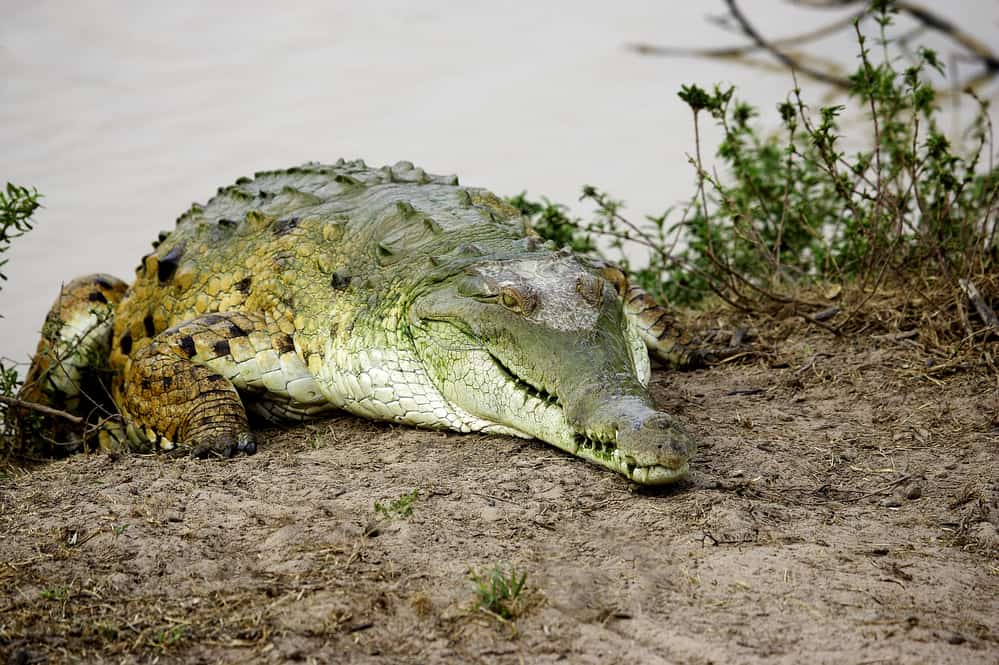
Largest Saltwater Crocodile
#1 Lolong
The largest croc ever measured was Lolong, a male saltwater crocodile found near the Philippine village of Bunawan in 2011.
Local villagers suspected that Lolong had been involved in the deaths of two people and decided to relocate the animal to keep their families safe from harm.
The concerned residents enlisted the help of their local government unit and professional crocodile hunters in the area to safely capture and restrain the mammoth croc.
Lolong’s capture effort took around three weeks and about 100 people.
After the arduous task of capturing the giant crocodile, Lolong was relocated to Bundawan Ecopark and research center to be sedated, measured, and then settled into his new home.
Lolong measured 20.24 ft (or 6.17 meters), earning him the Guinness world record for largest crocodile ever recorded alive.
He also weighed around 2,370 lbs – more than twice the weight of an average male saltie!
Though he was around 2 feet longer than the previous record-holder, Cassius, Lolong weighed about 500 lb less.
Sadly, crocs are highly susceptible to stress-induced health issues, and Lolong died in his enclosure in 2013.
Park veterinarians found that the giant reptile had succumbed to cardiac arrest as a complication of a severe respiratory infection.
His body was likely unable to cope with the stress of transport and captivity.
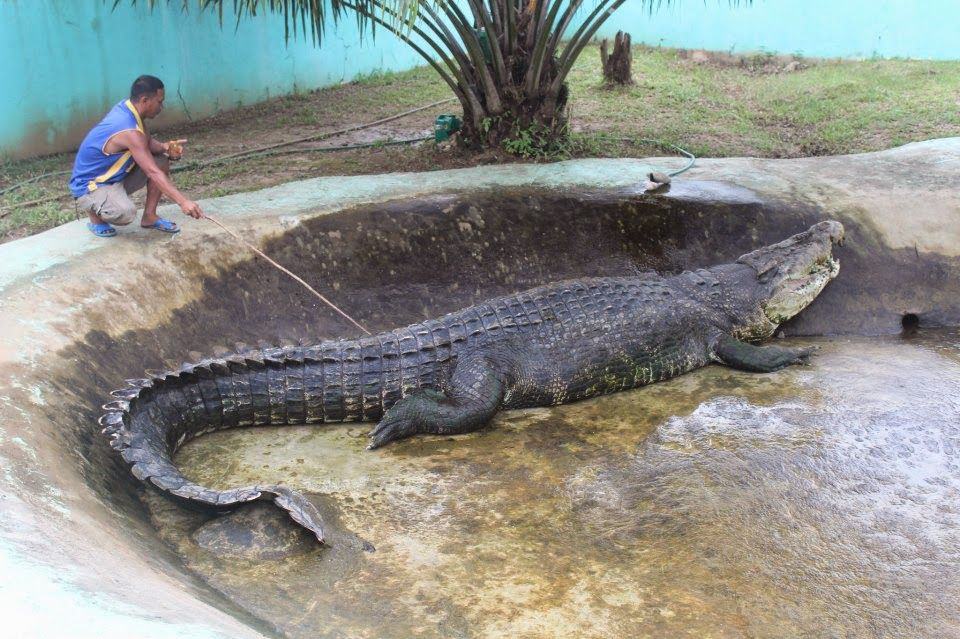
Lolong’s remains were preserved and displayed at the Philippines Museum of Natural History, where they remain to this day.
#2 Cassius
Measuring around 18 ft in length and weighing 2,866 lb, Cassius is believed to be the largest saltwater crocodile still alive in 2022.
He’s also the biggest crocodile in captivity and the heaviest croc ever recorded.
Cassius currently resides at Marineland Crocodile Park in Queensland, Australia.
Before this, he had been notorious for launching attacks on boats in Northern Australia.
Like many of Australia’s saltwater crocs, Cassius was relocated to a zoo to help protect local people once he displayed “problematic” behaviors.
If they begin to associate humans with food, saltwater crocodiles can become extremely dangerous.
Largest Crocodile Ever
The largest “true” crocodile ever was Crocodylus thorbjarnarsoni.
Stalking the Turkana Basin of East Africa during the Pleistocene and Pleiocene periods, this giant croc may have reached 25 ft in length.
It’s likely to have been the top predator in the region at the time and the largest faced by early hominids.
Fun Fact: The fossil croc was named in honor of John Thorbjarnarson, an American crocodilian biologist who died of Malaria in 2010. John T. was hugely influential in the field of crocodile conservation.
The largest crocodilian of all time was Deinosuchus. This prehistoric relative of modern alligators grew to a whopping size of 39 ft!
Deinosuchus inhabited what is now the United States during the Cretaceous period. It most likely preyed on large dinosaurs.
Despite living over 70 million years ago, Deinosuchus probably looked quite similar to modern alligators, with a broad snout and robust, pointed teeth.
Its name – in Latin – means “Terrible Crocodile.”
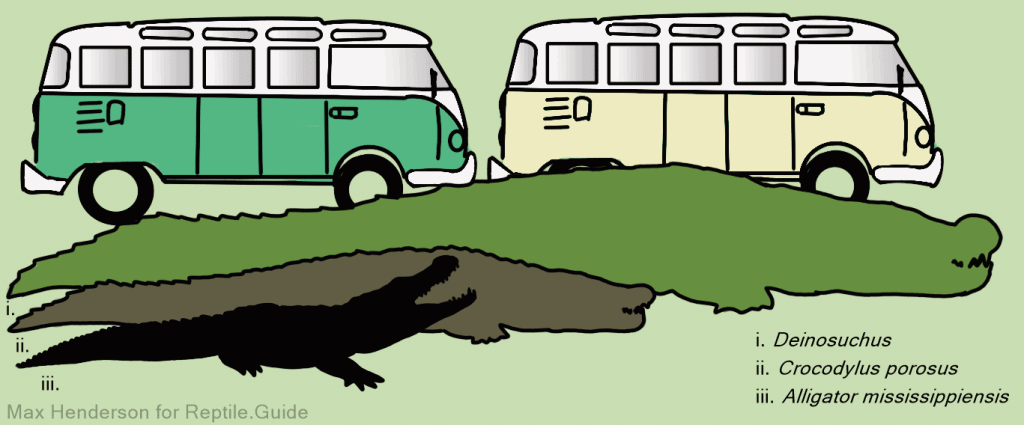
If you’re interested in keeping enormous reptiles, check out our list of the largest pet lizards for beginners and experts.
You might also want to check out our list of the best reptile books to learn more interesting facts about reptiles.
What’s the largest reptile you’ve ever seen? Let us know in the comments below.
